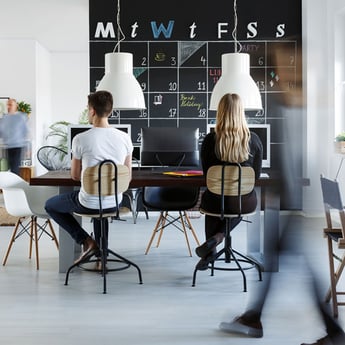The office that HR built

From stories of Silicon Valley executives drawing on the walls, to using the multi-storey slide instead of a lift in Flight Centre’s Brisbane office, it is clear that the office is no longer just a place where you go to perform your work, but instead an important tool for recruitment and retention. This makes sense; we live and work in an ever more global and digital world in which the distinction between the professional and personal blurs.
However, this doesn’t mean we should all be seated on space-hoppers and enjoying a cold one from the work beer tap on a Friday afternoon. While there is evidently a market for the off-the-wall creative environment that many companies deliberately try and cultivate, this does not mean that this is the only route to creating an office where people want to work. For a start, there are many companies where it would either not be appropriate or it would not induce productivity, but, more importantly, there is no cookie-cutter office design that can be replicated with successful results the world-over, or even in a single city.
This is because it is not designers, engineers and architects that activate the outputs of workplace planning, but the people who travel to, work in and spend their Monday to Friday there. Often, we see clients about to embark on a project to refurbish or fit out their office, but without dedicating enough time, thought and resource to their workforce, what they need and how they will be expected to work in the new space.
For those that are charged with delivering a new space this requires effort by taking the time to engage and understand by stepping back and putting the individual centre and foremost of the design. It would be all too easy to develop the same design for all parts of the organisation without considering the activities that people perform and the features and services crucial in supporting their sense of mastery. However, providing people with autonomy to work where they feel able to perform at their best is something which employers are more and more expected to provide.
A fear of the unfamiliar can fuel apprehension, negativity and even resentment. The more comfortable individuals feel with operating in a new location, in a different office layout and potentially with new technology, they quicker they will ride the change and the benefits realised. Developing change management plans alongside the technical delivery of lease negotiations, design, fit out, IT installation and operational changes, will help prepare staff for the new environment.
Therefore, engaging key staff to explain the vision and to discuss in more detail what property and design considerations need to be thought about is a crucial step in getting under the skin of both current frustrations as well as how the office could be better designed.
Not only will this help to inform scoping and planning the different workstreams needed, but thinking about how an organisation can support its staff to feel and work more productively can deliver great benefits for both the organisation and the individual. Importantly, it can also mitigate risk and unforeseen future costs and expenses. This can be done through the creation of policies and processes that help managers and staff understand expectations, by forging a connection between the executive team that is sponsoring the changes with what the workforce think and feel, and by leveraging the creation of a new workplace environment with wider initiatives and organisational changes such as technology, agile working and wellbeing.
